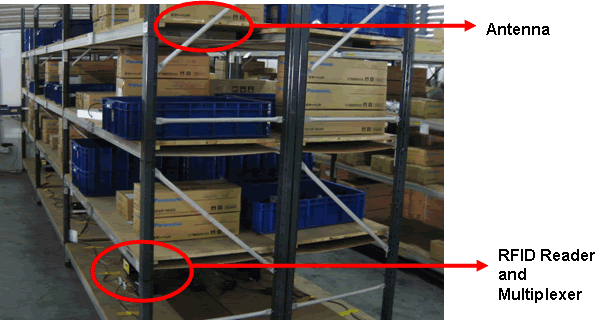RFID Tool Tracking
Effectively managing and pinpointing the location of every RFID-tagged tool within a specific area is the central aim of an RFID Tool Tracking application.
Employing RFID for tool management is a widely adopted asset tracking solution, prevalent in industries spanning healthcare, manufacturing, construction, and retail.
RFID tool tracking systems adeptly handle tools of varied dimensions, configurations, and materials – encompassing everything from small metal surgical tools to large metal and plastic power drills – and can even oversee their preventative upkeep.
Which industries use RFID for tool tracking?
Many industries exist which have a strong need for tool tracking. All of these industries can leverage the power of RFID to help track tools:
-
Tool Rental
-
Manufacturing
-
Hospitals
-
Plumbing & Electrical
-
Roofing
-
Landscaping
-
Construction
What is RFID?
Radio Frequency Identification (RFID) technology utilizes radio waves for contactless data transfer and identification of objects, animals, or humans. A standard RFID system consists of a reader, RFID tags, and antennas. This versatile technology sees widespread use in sectors such as healthcare, retail, hospitality, and manufacturing. RFID has proven to be particularly useful with employee tracking as it allows for full automation for common employee tracking requirements.
Why is RFID Tool Tracking Important
Effectively tracking your tools using passive RFID tags offers real, direct, measurable cost savings to your company. Tools can be very expensive and losing these expensive tools takes money away from your bottom line. Additionally, consider the money your business loses when a critical tool needed for a manufacturing process can't be found.
Rocket RFID to the rescue!
Rocket RFID has a tool tracking module inside of its commercial software package Rocket Tracked. Getting started with tool tracking has never been easier. Our experts help you:
-
Select the best passive RFID tags for your tools.
-
Choose the right RFID readers that will be used to read the tags.
-
Train you in using the Rocket Tracked software to track your tools
How is an RFID Tool Tracking System Setup?
When implementing an RFID Tool Tracking System, you'll typically encounter two main setup options. The best choice depends on how large and what the environment of your tool area is like, the information you need to track, and your company's preferred way of working. For the best results, many organizations find that combining these two approaches offers the greatest efficiency.
Fixed System
A fixed RFID tool tracking system relies heavily upon fixed readers and antennas in order to track tools.
Fixed readers are always powered up. When an RFID tag on a tool comes into range of an antenna, the reader automatically reports the tool to the tracking software system.

Fixed Reader System Setup
Fixed System Workflows
Fixed system RFID tool tracking systems can be setup to accommodate multiple workflows. The best systems tend to favor leaning on the automation approach:
-
Automated Checkout - This approach uses a fixed RFID reader to automatically identify tools as they are leaving a checkout area. Placing multiple antennas or sensor beams can be used to infer directionality, properly assigning check-in or check-out operations. Employees with RFID badges can automatically be associated with the checkout operations, providing a seamless workflow for the users.
-
Location Tracking - Placing RFID antennas at strategic locations can provide accurate location tracking which doesn't require any user interrogations. For example, antennas can be placed at shelf levels to identify exact tool locations.

RFID Shelf Level Tracking
Handheld System
With an RFID handheld reader system, personnel conduct scans at tool inventory locations at varying times or intervals, tailored to the application's specific requirements. Companies can opt for inventory checks on designated days, at specific times, or before and after particular jobs or events. A key benefit of this approach is the "Geiger Counter" functionality, enabling the precise location of RFID-tagged assets.
Another option provided by a handheld RFID scanner is a mobile checkout operation. The power of this approach is that it leverages the powerful read capabilities of RFID while providing user feedback which ensures accuracy.

RFID handheld scanner
.png)